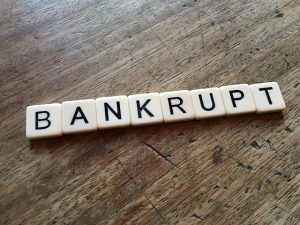Five Renovations to add Style to a Rental Property
Five Renovations to add Style to a Rental Property
Don’t let the limitations of your rental agreement limit your sense of style. Just because you don’t own your place doesn’t mean that you can’t make it your own. Here are a few ways to personalize your space while still respecting the rules of your lease. For HVAC Companies looking to do marketing, check out HVAC Marketing.
 1. Paint : In most cases, a landlord is fine with you painting, as long as you are willing to paint it back to a neutral color when you are ready to move out. “What better way to show your style than through the use of color? An added benefit is the highly custom nature of their solutions.
1. Paint : In most cases, a landlord is fine with you painting, as long as you are willing to paint it back to a neutral color when you are ready to move out. “What better way to show your style than through the use of color? An added benefit is the highly custom nature of their solutions.
2. Invest in Artwork : It doesn’t matter where you live or how often you move, artwork can always be taken with you, making it a great investment for years to come. Because there is a wide variety of art available, it is also a great way to show off your unique style.
3. Buy Universal Furniture : There is no point in spending a lot of money on furniture that will only work in your current space. Instead of purchasing an oversized sectional, try opting for a couch and chairs or one of the new modular couches that can easily be rearranged in a different home.
4. Accessorize : “Tie the theme of a room together with fun and stylish accessories. You can buy items here and there when you have some extra room in your budget and they can be changed out as your style or the seasons change.” – Treasured Spaces – Home Remodeling Minneapolis
5. Make the Most of What You Have : Sure, you can’t change the carpet, tile, cabinets, or fixtures in your rental property. You can however, make the most of what you have by choosing towels and accessories that maximize their potential. By embracing that which you can not change and incorporating some of the things that you love within them, you may find that rooms such as bathrooms and kitchens, which have more limitations than others, can fit right in with the rest of your place.
Effects of Bankruptcy
Bankruptcy is a serious thing. If you are thinking of claiming bankruptcy to address your financial concerns then it’s important to know about the two different types of personal bankruptcy that exist. Although many borrowers assume that there is only one type of filing for individuals, there are actually two types which are quite different from one another.
Because of this, it’s critical that borrowers formulate a plan to file under either Chapter 7 or Chapter 13. The following article will discuss the two types bankruptcies in general terms so that you can make the best decision for your individual situation.
Different Types of Bankruptcies
 Deciding on the type of bankruptcy to file can be somewhat challenging, particularly if you don’t know much about the process to begin with. A bankruptcy attorney can supply you with specifics about the two most common types, though we can offer you a general breakdown.
Deciding on the type of bankruptcy to file can be somewhat challenging, particularly if you don’t know much about the process to begin with. A bankruptcy attorney can supply you with specifics about the two most common types, though we can offer you a general breakdown.
If you’re like most debtors, then you will probably want to file under Chapter 7, which is commonly known as “liquidation” or “straight bankruptcy.” Under Chapter 7, a borrower uses their available assets to pay back their creditors through the liquidation process. Any remaining debt that hasn’t been addressed through liquidation is forgiven through the bankruptcy proceedings.
“This form of bankruptcy is quite common, since most debtors don’t have many assets to risk in the first place; therefore, it’s essentially quick debt reduction strategy.” – La Crosse Wisconsin Roofing
Chapter 13 Bankruptcy
Chapter 13 is quite different from Chapter 7 in that it essentially calls for the creation of a repayment plan where the debtor attempts to repay their accumulated debt over a 3-5 year period. Chapter 13 is an attractive option for individuals that wish to protect their assets. The downside is that qualification for Chapter 13 can be tough, as the debtor must demonstrate that they will be able to make regular payments.
For a more thorough explanation of the two most common types of bankruptcies and to find out more about some of the possible consequences that are associated with filing, consider contacting a qualified bankruptcy attorney or consultation group. The more information you have about bankruptcy the more likely you are to avoid making the wrong choice.
“Always consider the advice of your financial advisor above all and get more than one opinion before committing to any contract or deal your provided with.” – Roofer Minneapolis
Fixing Your Bad Credit
Unless you are independently wealthy and can pay cash for everything, your credit score will determine the cost of every dollar you borrow, and consequently, the quality of your life. A nationally recognized repair credit explains how to raise your credit score. It’s easier than you may think!
Bad credit is a term used to describe a person’s credit status, which depicts that he/she is very risky to repay the loan brought from lenders and other financial institutions such as banks. People with bad credits are not at complete loss, as they are eligible for getting a credit card with poor credit ratings too. The opposite from bad credit is clean credit. Everyone want to get this status. However, they have to pay a higher rate of interest and higher annual fees. Individuals having a poor credit rating have to follow strict norms.
 Financial institutions offer different kinds of service such as credit card and different types of loans. Lack of knowledge on part of customers lead them to develop poor credit rating. Bankruptcy, court judgments and defaulters make it difficult for such people to get loans in the future.
Financial institutions offer different kinds of service such as credit card and different types of loans. Lack of knowledge on part of customers lead them to develop poor credit rating. Bankruptcy, court judgments and defaulters make it difficult for such people to get loans in the future.
Credit means you get a service or cash to use for your own purpose. It exists in different forms such as loans, mortgages or credit cards. You will have to agree the terms and conditions to repay the amount to the financial institution.
The first thing before to buy and financial institution or lender gives you money is the credit rating. Credit rating is of two types: Good rating and Bad or Poor rating. An individual with a poor credit rating finds it difficult to get credit.
5 Easy steps to improve your Credit
Anyway, have you experienced having a negative credit account? You have to do something about your credit score immediately. These are the 5 methods for you to get back to
